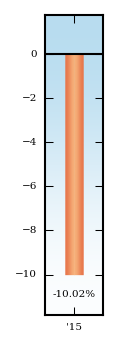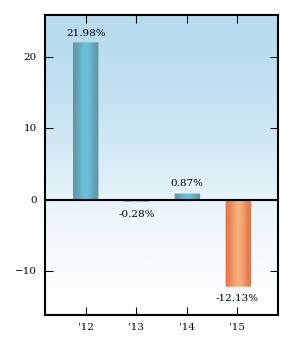OR.(+DZ!]S)N>;I/.
M8Z@@J-Q%\]<[!W>2?/;7.R=MMOB?!W(9G +4VN_.WW3&\>D +&8)+X7YF
MUGY8SLXXUV3OP63OLZ]CO[L.6L*V(.J27B.ZJGWGLZ[@H/HC@F>#-*H>^[N_4H G[QZ;L!\>_8,A/Z#T.AM@+@!P/W/
M!^#!XR$ ]V\ \.'G _";P1U\. S@WNYG/.(G>P,0[NTZXDMN4M:68-)?ZWR[
M_ %O^8.]1TQA(R &@#OXO,#M'O0!=S W*^%>);6/.D#=&__F]Y==$@H'G'[
M\TE)S4NJ7\7Z\F!G;W=G[QN&:.Z7-X!%W@GV@7OA%"V&"VN_1-NLDQ]MG8#$#Y4#2&
M(5BVP0YE1;I^6E9E=@<#=/XWN6S;Y=/[]\G'U3@?U_VZ*K+[
M9]/+;+8JLIM Q;0YRD7'R4D-*58+C6;FRDO3-OD_R?]25!# X@(RM]Z ^*!_
MF]M# :L2Q*"0TIX\^H ]Z5]BOU;Z4]Y>^L;%O[5-"6&-T.3@ [9D^T4/>4%^
M0[L2L#*+,=$&/?Z #1IGQZ^.?DY>'#_[_OA9\O+LZ*2;*7E\_IR#NQ.*[C[/I^^R
M^BF\<_S2)R=^^>O3_CJCOE(:'_LT>?7SV7%R6$]3%\X6H(?S2F@'E5M &Q,Z
MZD+SW/AQJ'X\<0>@-W6.4<@?>;%#R# *2D,H7/_(%]D,RYPRSD9%OA!G.['J
M-HZ*XNRQ;&P3MG4Q48E2:%_;4+@^+E34Q74N8/=W/HM;&,3UPS!!FR(\.)0=UTB0A]
MPCDC2#XU^:^+/!QK2>YK*5/13$%%E8(QG61T=G)C$"M%"W*(?4Z!JUAGJ">RA9I947:F3@2V8/,)Z(N,.EG*OD76 J%3*%\LWGN)>D$/ZD,QZF;L=CFXM]J/"Y#/'@30DLE9W 7#F.FZ2L@\)4K7-;%N0)H.ND-*+/
M\B?W^,CD)OB?K,.BU',-J2+K:WI,:(8&:JTEU+452%D@7:4DD\Q50+K
M(3)4U-XKS"])FBJL:15&9''F!:?ES:F,2/>&**P;<:'E
M^ZG9ZKV@=./ZE7/?P*G-7JM4*9=1,@G- R;[(^;H(Q>#\XZO%6((AW)12)%?
M.S5'AJEY8VYCKH>FN24V55O*^N&E'10?>&22I2JQ(B#6WK^N\
MQ?J8GA\(^@G!UWKM0T4B?K])7\,YSQVCPE'Z$;;, 1E$DE0)E]U$#IGMUMZM
MRHLJN"J._R,;P5[&G'A!90/-FS J)M?@;LN..3DMRG%I.KFN0VOO-R3
M[6&V2">%N^KD7(7!G#^_EOS[WNX(P X*QFB2HUSSB2-F99@(*+SQ,62!K'!)B/GP*TV7-QA+4 RQC1XF46>+5#OHI M
MDL,"0$,*29,**>2R55I=BL-5M?3-"/.3.'&II1)W!#IWNAKQ*/PZ5TR89$][
ML&^89G1L^;=Y-=S@B8X^CE/4!Z8?!._6=!C7\21*@92R6G'!/F!*)?8C+PJ5
M-*5NQ49VS&5"E]SH)RZXIG'4AKN,7->M-7(4J2Y>!/TA[P)V&!Y.6(J[8UE]
M2Y4.77&=YAZ65W65@5U56-E7*;=NRBNIK!#O#:[&YX(-E?PE-AK6*AL8KU7^
MZVNG!9I(DX55S8:8Y\T,BH/3 PY[5]2JH&A<%Q-$DL8L0DFXW"#8D=PTCU0:
MDW?G&COBSPLDJ-*T>IXWF.> E":HB3)T6EAW8V_O*U=N3X1WQS2#>KWC3N.X
MWL5B-3G>$(H0IU9[W?D%<3W=XM+SKGEUU#IXH#7JN)\$=&B49N'>*FG2^VR[
M LE$>=? $H$00W;[)A:.GM_6HH:_]!.@O=W=K]2V!P.]/7LF2=ZQ4A9G@8>*
M -\[E\GO"W2#W$\3]QI?PN;'D1YBGL,10EV66Z.@D0]Y8CF]1+L?D:>+HIK
MJ65QN?R&++X6T[S0HC9.*N*8EY?<3;7;V6Y3"5 0GW0C(]L@YQ4OX,PO@4%0
M1C%E4<#9_.>JS)+]7:J%\6C4/R[EIU/=J;#&OLO2\!:W!_L=8Z@K-/LT^:Y.
M?\D+ZI)29-PL)85_JJ):3+ YM=I"?]>8IH>O@OD #M=>!9-[=<.
MZW0"6)Y3"AD+=IW=9 Y%1[G!K&RL0D=J!?8E#.)QEV3QY5QH'AW/#5ND4EM'
M3'BJ2MHZUY!9"QS--$/AT?ND>;_M$-\$(=;8$^D"6+ZFVY6M#C*(&
MG%IRCWH6Y(MLL-2FE-THUJ:CE/2B;P:;T8>VN11K'3=MRGT)(B--6!XPXDZ#
M4*$Y=44&%4M3EMST+2(ZY'<@.+ V!LKU1%VYB3VO9*,=QJUL#"#B+J)QR19L
M\ =K]LGEU,ML!M1)EK:1Y"8.DKQETJ\MU=P@W*(O6V Q^WK=VW&.I$BECC.I
M7XX%+9=+5&7PM+G.X^#&GNAF4?H6UOLHU5*)*#/-0EV(;=KF>+&8ZJK5X@"]
M5PJ[*YHBMU3+M*D63DQP11=<'V$UXWG9>5GY,IAK%)79'CGV\#L^JD?,146]
MI#K)6C1T^;1*RT< ?]]EV9+:[70E,2PZT6FXU>D>V&^)WHS0[AJS6-6@Y,I:
MMRY-NUQC]W&:S%S-?NUF;''OM'\"BX[H(Z;%.>&S(2IO)2D>>:ZD,#H W5W2UGJ913[,RB
M@XJAXC6L5
M95-V",29&I62($=64YV[6W%OH+#\D'3 *!"-GK;20L&U@XI0P+>&">@F-4;@
M+E/5\.J&0)'"4K.,N %7MIYF^=+*!4P7XZ$Z8]US">ER$*LE@K37=PHJ:7#]
M%ZPDO31YP=?ITMG_L:([]L=@*P'\@:+^%5;E:8/N.MX4R?T]M(W\BBJYDFN(
M5!"DF,C=N7$S7""4#D=XLZ[)7$C@F=7V^*D*#S1)=.&X[Z#5%5?I_7,[R:0*RQZ.P,(KZ1S!+Z([?7,
M=_?03P\#J25X=F%Z;_>WITHI[;SM1$+0;85-S*FG1Q!R<6O 1G2 6O@UE]CA
M3V4>KRIUA#R4?IU5W;AY/6N5SKP"-] [CHCHIFO<3OF7XVY.S3JSME?W[MW?O FO %)F;2@IWGSJ22:V
M!R9(P,)$[3>XH2;:@> A0(OK#-ND?M48D?-%0@WZMX>
M]<3/.!@/N74(Y$;IW<54H.LGXND.ZB",Z=GSP/3K5T0M6(&A2>54N<]!'T-L
ML)[ "-$%N*;NTBW]-\=#2I:7ZX;$Z; [(MX0NV*L0]N2'6&R[#MH3@8+#J
MI941 F6 !7L4".#>U+-."(9Q2-G*M%;%"IZGHD.^RY[T5)G=^S"1B!K6PTE7
MM78O0/#1JZ(8 *<+"1"HT4A)P[-=XQ)*_&#VB_\6WL
MLUQZW9#,['(PDKG:;ITVC[)YW-8J!_?.-;[X4*_XS%RL>#O; O(?;
M=**>K184)0?@>'_J*9EL(_^IF=D"<[M^T]]B^61_PY"2F3:/8BOI-!0F?[G;
M3+9_ U;@^6=H:[Z;Y30)&[.*-8=5L!4KOK/]CA2,3^ 6\[X'5U^?3-,\<.0;
MSF._K!%;)D=!)#3K,F*]1 $KPS[O TZAL4V!ZOQ-\884 'U4 $GIM+<]Z[-"
M#CJ/7(? L.U4?SA*IQ\5&3!-@>/0T(\CB*'"._W4ZS(*B6#\>]P+;(IKS9HM
MMZ9AR!-?.RZY>_CVY;W.9CTG'S)&U2&\^"](\(>K]K*JB2B](0@!VW"$%(7D
MN?1M96\QZO[.BN<3$3MQWSZJ&Q$L82&")16J4
MV,@D8XZT(80((/&G".NDC9NJ-I)@B//@;N1&F9RG4\1?SJ%?++"OY2(2+;YV
M<7[2OSV(F3(^I@:5"]2WL-HXT0$J 8F]^5 BQ3"^VCO1\$:2-X#Z4J\EFH^#
MG&; 3CHWJ?8\D6>RX9H2"IA@\&'+;7CA61J_P- -%TG%1$S#=M#PS)J0LU]M
M1L9^3 HECQ@G7V,<]S :ADVKIX*!W*]0\2_L9^ZHH0OZ\&E$K@J\-$F$R7R7
M<63G>2OU*VE'B1Q.,?]A +Q&BKF26" &)Q6/J/7B95K,/3>0R[XT ]SK!F/!
MQ$.S9>]S/I )%N#%RLZ(SS7Z5ERCN[HB2Q!WGM;]<@4UW9X1H@N7!,E_*
M1&7B$J.(\540VL#=#\G4":K.(E]1ORB,UB";!SP!W(W%\ZII\@DV54SQ3@J[
M@Z-L76525&7)Q
M,P'W.5/#[ZSGROF:"D2B:Y QBS7OT!;W'#O+5#/76=QY[U-]M.(C9*O-Q+^P;PJYW['2%RR)>
M%S<*17)HYND5.ZE,Y]2@'ZH[!W4X&UH!)9^/)S:]!N.I#P8+!5D"5 L*RAPJR]+7G(^V(D%8HI1M*
M5F2C\1)UO@;FG8V4(,6:WR:QSN F%OJ^/D +-G-L L.>/1^HZW/R1-
MYY=SYQ-BG=+<@EFUP!B.J2BZH+AR-67T\;$#&Y?BS%CN*;S9-;M<$55A4M:T
M%9;F:X0&*"PQ#BX$[W]%RJQ-Q$?:S[ZM7;=.WF'265.X!_E%N
MJY\NJ3T[8%%^Q>0#&!NE91(NLHM)?5IIY'-TUQG%S8;U*;P7H@NTOH.O&=\[
M-)M+%="B:"FVV,*K4NZ;L;;C76&]% LL)WC[4C5XJXD4I4P)ID+>XFS2VDT]
M;^D1LM/V/4>SCSELF"\3^J2XR;G188%,L;$9K:8@]<+,UJALEDZ80M$'?H-;B.9+VY8JZCM'>N!^
MM@Z++=VUEUG!X2,V9C^Y2U];55^C6,A&UJ?U#RG]G13IS3X%VZ1;0Q3(=Z_6
M]&*]PY;K68]# H_VU;/G@$?X7Z4\)'IP,!,S@3[_@ /)C89N,,S8)X;D0J'R
MDL>60Y-[8M[F9MZ=YN23C S>I9=C:Y0XZF%' X>0D>B_/A@\TUS[= (B\ZX&&-M.>')S?J5''&&V?_CL-3U.)C+@X&Z=0IFU&H
M YC5Q;%O(%G=L8MY_CZ3\ ;*>A+=I-5A-C!XNW*"52MIJAS]NX-YVC
M1Z\/Q]=-RTZF[9) N3VV#QT;VZ(3IE% 4J35.74<,DGD5P)#AURN$Y
M8YBEQGU'Z7DD56\L,>B&=JGLTNO1)AD@;U3K52.4YA581[@[5 [1IGQ6E/8U
MXY9-BGU4DQQT2EN0;@9M18+S%(3X,(*,'A*T77@Y>_!24
M,D4LAM JU-'&R1E0"K2$H[6*VTR1[N6$=WM.X;O,?"D^K;9AX2;@NR-61B.0
M,.F-S!]YBD?Q3Y1Q@2="Y$I<^RH&3)$7MWR]U?:#FGQ6LW]"21R> ])M?$[5
M"LUP'C9*L E-?8\)1K4563@!N@&0_03,Q_V^G6%'5QPKLM]U6=& (8Y]>:S0
MN2"(61Q*$G!TM(ZR&*T91/D\I)EHY^[>&R>XJ?GM0T44'\:8#88AFVRX,.21
MF@PZ_.,H+:];Q_&6?1?XOG'J?-UTU;TN=Q0$\:!84;NJ+24AV=TSHW'RO=*W
MD37!=:3ASO*==:)SZ0A[#1'R43D^4\IJHKD8-N*!(GK9%]N;A4*R%QUPJ8P[
MQB#(4NU:'?!B?/.>#>-:FQM3<;_@&Z0*V-#G#\.U$54JT(RC'AOLAQD?-=%(
M*; (Z5$BZUG+Q#B0B7Q//C()DW&B0HJ#)K$YE01IN*P(1@T5AF0667D!Y$>=
MFBU6CV"%E9 6O:+&6V((:'1\8H:!/5B'B@[^L$G1&9#PA(X,J$I(-BO,M$AK
M#)?>AA+"%LVZA/ 'W Z?F6X00HD0$K[ 080&"/KBQM2C$].$TY FKR*ZES^4D+3$D!-V+H@I*(D]5
M;\,#H2B#KJY*N&'-NFEQE7%470_^AV[]
M0=[C7/E;/>W*%V+80!2&,_R6NL"H^YR67:R]]V:1OJ./ [[6D5'Z+'L.G*1"
M!,1-$)WB!_,Y=]%-Z PS=-B!>F4RJ(:]]%\W?11TY&D'2T%=I(HBES''
MIM*UF'\RF(F>-,;8D9B*\1J[*@X^LD\<>;#W?F*9*%*?A[QQ=)GI]C@FV1DJ
MDE%[4 U_#4-.;QO];@?U-E.29\Z"WXW!;H<;IT*UJ-18R"3D]*5:&*&/@1Z/'^A +83=ARFDH!&*DEN[IR*5Y
MDW;G/)O&(X\V;:<[LF&3 @*)%^;L3^.Y31DW(VPH9LC.]FPEWFU29VVLI%6E
M<$M, #@ND';)J60\J :>L8G*V*0(7?'2@^0])W-,&Q0338"[4RUIK"!P&&02
MANABP&9 9/X>&3FO60#WIJAI59,%)#/Y&DZ>")/D^G4(=F&HZ;31>GZ2%Y.V
M/?H"X[RS^*D[)55W3(.R^0R=Q9IF6P6'X^Z2927*M:+4'$HR4EOQ=8[4@6-O
M@P&=4Y75!%;=@W'D5I 2L\@!0W&8/$M1\\'WJ0X&H_W,IU.,90X0Q'5$2[1
M31C9J-FVDZZY23.Z1D@3[4+,]D>]OK#X56FMD4KNU;&A"*O+J;. -Z]*"4RC
M&KB#*,99R[Z8HTC>K'>25U#T7T,0Z7I:BW,H[X_Z##Q\@YS_00)9PI#!CLVA
M?Y?X" 6EQXEE*'@5+I"@U3F[14B-79"'+Y-29NIAZ<&,"XHUJ_F"=-3*^P,I*_;B'9E(WR]ZTWHEMN
M X:[A3YO,]AFL>"8,ZI-%'8L'!QW$]FYQ($CZ3[HA&!R(GY(*C6@SVFB$C3%RRQBOU@ 3>"2X-Y(W($"\W @?8T_*4?@"-3D*SR&*R,38*T#>L*
MJC' 3[)2T[6&#ELP9/"O$=Y\T4A6 -=@;T/R_8%P4(H9 H'Z(RH.4T>565[<
M?+#/?=FJ@0BC-R':! 8:8GY^A"CBR*$CZRZ2ST)EI)6^.&/."'-244'&\X4?
M3+Z,N4&C/A?IR(E.;(*;5=?EA:CA!NGBL"7>4'5Q!-YS&<_>9),O2LB#FFIY
M08Y$+@L#8%*)R(7&"DXE9EO\S'X5)I4G!UUA%>01\/:N1QQ1>^,8_9OOP^I4
MU9EDRC8DD$'&Q:*3N$6D_:1MZXI.F7IEB[28K\JIUTA5,6,2"A>AHGAZVD:T
M@L/9XD:XJ)3< U9*U"/=G9D5*XU*&J&7>]T&IGQ*[/KWWJ 8(_IA4F(F:.JE
M&-3'TZ9EU@$^BQGGX&L^?F0R!5
M>>=49*X>-=,E\5ZL0)&!B]M;=TS3+E*N66HEEA3C L$P37+'&TK3V4"\!E/8Z9FOO$E=%S+@U3.E
M'FNY,_.>C*0@#("K'W%Q A+4ZSKPD4<)O1S"$Z7UX'<446*)Q4V!UC=9O[9
M8I_2>^XIY@ 7/=E0#Y)S$$C4E^AO":F53 5CU0-^@\6IJ]D*US%I@-0WTXRJ
M#)^C#\#ITY=9>H45"DR^-+/! FV^R'=@%-A#4K&IKX<>RJ0K3/JCH*A7M%!@
M9&[MDZ500N-QMMD\&[P84\A!PQ.7>&NX@#07"?OHXI(C;@C2$[ >2,J42:RY
M)9/,1V8:E9'TAALC2CL&*/2.< (VJV:KK*O3GQ#*@F/Z<%UY=Z39\(F-07'!M]'R_2JP,32,?9CW+?RJ+C
MC7S_L DH;8'NE@&VP 8".8$.O>)LQ/Z( -D#WU_GAI'95LQU!I#6B=;;TT<
M-(0R"PR;$I3+*B\9:OCO+:X;9SKTW:N!0MU"-)J!>MY&=NVM#QCD(%4Q3@YE
M#7'=/!>9<11>!RLDB^Q/%K) ^.=JA)K9H60I3) *XS3*'I#);^E4O. >WI!K
M56G$Q.8#^8%J%!^%%26/'#/H^#GI\:%*QD&@=3I1G5FC'P=?(X$C77KM/"]-
M@6E5K\;)=K,38:!:*LS<8W5;$S$OZNH: \J=D]O9,8D&;H+:E=+7,*;6@;R>
M%GK!(G0M;EX!>K8HJU\J:VG\5L_=F-15.@M3[E1-W'CH)F^[HWLTX347:S6Q
M&5OLJINDP$&=9K-#\S@;%PTY#J+(J'H021)2%$E-C5((;YLUT=Y_<(*@*<[
M=1ZILJX4^Y-6,.(8H2]W,':I8V1EBL,U>8%4U.95PA%"/%@@_>ILM&@@(#_-
MULL[E]S0#UXF274EICQ5*U=(5C--^PM!N'OAK/6E+X7LC/3,Q1OI@RCZ,W,M
M&9W+7P;F??^D;*UU,H7!S.A*EKU$NQ3J5Z$K*]"$M!ZKY/[>-_G'8D\%\>+5
MS\GKY\GYB^.SX^3YX='YZ].S47+X\O6K[Y/7\"U^>GGX<_+#\>&SY/PU/I@\
M?_OJV==G"7?C37-Z_/+D[]AX9-\O-=&1T8[WY@$HWK:N"R>:D*"M3E!6;(6#MI0'UZ;&94OE@
MGW:S>4=>:=+?44'=63?A?;\@9%).;G+0#G6%H<3MRJ(:17\,E7DN>[;$]S5=,";^F8\?6])N0&S(GK5-XR0C='=XRM_3_T0!O X24K2Y!N;)Q\$
M((B^8D]!?3'&.N\#INBX6:K";/8MT*\J=YY15T&R"&Y.9';:']W()&PC%ZI^
M-ES"554BZZJIA)9V@G4EX&(XOLT*!P@2"\P#\O+P^%OM#3FT;G"^G'2-
MLPO.U3B2R"&B0@-M7$4QN"*/!0F$?-!QI*^ORV_*';@R_GDY5YMUG6ARL5!'
MXYJ]H?64D1*$;RTK+,0U30OC$,!;90R>DIWN_70F@F:@F$*\KB@2MN\MC1=<
MI&LM/-$YZ4A!D@OD4_DX3VP6E-\EWLS:'9^H$&*@\"M41JU!:,&].H'18KPR
M4WSG))# P\;XR]ETHS$!2+HY_VJC,$,X([9EFIE]M,093:6B'"C"L9X*8JK'
MT\W8_EI-VU)6S+R['8 &ILJ,)<@M%6B)9J;FC/H<4IAFB *R*BYM-4HN5PLL
MA(LVU9&*-AH&BCZ_5:GDBYY!AQ7;7Z,21X/1C#W!95%@F'-.4+FE'?EZ1)X9
MR8HJ 1'_2;$[ F+6<>Q@>H)$MZE+QV]PIU*PVW7,?-6L5Q_^U&0]>ZVYRA)I
MQQ 0/#.>[45UG5U)<"A><&UR(,FB&AV846"RPU?G_)=[9!9K0@IY2 )D,\Z]
MX;XQMBW8!POZ6LFOTP9$=\W[HET569-BT')40+>E"TD"Y"[L*.96>V9^C7\P$3'Q?CNI0I,-L,GA>7X<6J$VFA#]*]TZ -*HOE:S!J
M88UQ\L8-ZY^)^ 0&.J//9,D@'
M?)D!7YG :3)?^]* H9M#G7+S&.4'*_02S',5&A*-P1QZ(]F/Z<2^W=BI1YJ
MJ69KJ$;B%OY.<:0B83BY:I/"4PFI= Y;^(8GBZ?0._$"8R3^#O_9*;AY7*0)
MAG&4F^>W7D9=ANV0AL#XRD$F/)/KE9((PWY7NL#MU
M;.XT%+>WDZ),Y(:D&+4P!E42](Q!HNM?S..ZC3[?PXEWKZG]F6IB\^P:Z2@'
MCN"WNB$F%@4MA422D6"7$@UF5V[*UP!50VXP%0I&X?/O86=G8F5LEJ1B.O*7
M83=FP)_+?,E?BF_.8:#GF J9BI^>N4@L?A9EL)"AAPI%8-!O9,E!W9.%F I$
M5ZX2'41G^PV@0YP7*QQT1.H7VZBXL2 Z"SEDC6K^>(^G^)8W(\4)5R J],=5
M22$[9+0O 992O=5$"5D.*E'IF%2U"Z+G\DN>.2ZHP&--FS,',%MI.>'+,W 9
M1BGSY>Z16+AZ"S:X4Y$H -6ETS!*L1HH+V^B,U&MF%*3AC;G;8@B-*/^+(A*
MTL!"L^^NX7QN95?2E29I#6=5PB9SP9
M8:)!=1#R>+)>X)V,>2<'SM'$X[C+:G^5Q8"V"/99J@_GN*ARONB,6\:YW5?G
MI"\Q;QBH:@[ZK_0J01D2]"ZD-IJ?/R4ZH(I9G5%< 7RVA@]>K-&D0_IE>&D
MWBO.5H4@[CBRCTPE-3%4]*7.4;R0CT,W[J7:%4""GT-#E[;HLT%V'7=#D5V@
M!<6$, 5%:%Q\;!L(;WCZ E%<4V9+H/H-36RTLJT:3.O%H Q(.9,8E+!$KV.>
M$LS2*:UE#3'=D /)0L-SO$PYV#)OM*HBU_[GD_8GDAS&V?T^NIQ,+)G9SB;5
M.,K*RW.Z3=Z?+D67Y?MI56._3^R((IJ.VG/=<$0\J3H+K@*T[HQCB>><_F8?
M["W[S5-A*1^)-HPR+ZUFL!%_C8WR!V$6'U4[U)<"-H=6\(B!)52^\\@5NC\W
MJB61WF@CNT&DJ*D/DN9;5VD92MQH.9'R0<2W(KLKB0,HC+(YH)3*UQ2BMH4U
MRR2K& @U!?\JTP8^KDQ#%#5D.G&(-6DF">7Q.IC[#@P3EM9ON$L)DS[L8^)G
M4 J&[:"*D]
M^K4Q$I!!4*;U,2FK4LB'2W8WT)+A8)^ JD)B,U>:89)("B=ZZIZ1"./;Z#I64YTUYC
MR$V,A>8S<#U2\=O&LVNIG!JV&B2,7W@2SFFI*4H-KV*LKW$\R4YW%[(=.
M3OQ]"NK!VN>/YD2+QLG1X#,#>Z6OC@P ,GOI^_IJ 5;;R?$8NXBY/&%VT% "
MC^0PA,!O#'ITE]/KB[/@) !W?,D.30;BO$^)PJ#J\K#C+5;F-&Y^E "')4S4@.V7ORS2.JJX*MM5&6N8N/W^E]_LX]@%*"
M,,P4%!GOZI9IC,=4*S/;0DQW37SM/;T#_JP4#TAJISC999J'()LDZ(FKM]V.Z!Z+4%&[0NPN
MI.WFO#1:;5@$AC/]^%G2OZ[2.L>PTC*[)AO >VY5$N:D>8.7RT@G\TNW08G$
MS'+-=^9'DARKR2*F[J@N?E6NFI5!DZ!P,>VG9@^% L1]KBPCB-S9WEXL*
M^P:F846A\!"U+HFM2L6*:[&P6O:>%V(X9H\VT --2(]Z2.U3H.GW!D?$[[=H'GP7BVVQE8=%
M0$F\*BI7&BEY!83EYZI^EYQ1"0)7&_WNG5<_GQW? =+=KI?BSC]XNKN;+,>+
M\0BT)LR9+I-SN!#PS-UCSH]N/WL0LXL4;K2,:S$NM=CE:I)&>6H8C5TBI
MK_-2>@SX5"HOAL2]"2FFE;#3AQCW\7USD.O1#>,1X]:!V+IH=>@>8<85"RU8
MG^UK?=5I=B5AW%A=ZUK")?%I%QKO/$BU=VW(64IF/)IUI22)S6;N$=1O2 SK
M3/99NN8 [1YF0['P@@G4S- JW^?EV>]/B)9ZD->G[
MK5@/7-U].&)$T.82_G-I6UA@F(AH,5*:'>7G#--XJ&*'-!^48$H41J6&FP:>
M"CJ:^.L@@%NUT^^P=COVW5EH)P# ""_=2H:/L1I(]!Y%O3B!.ACR#4;16 WL
M[D2J*R#]FE.Z0/H>VR<[0:;,, 00Y-ABK6O(POT@3#;-6(F4DR([3LZPA5OF
MXU)\O,D$R\OJ&-IL?N_QMTVOY24/6LE_'XIF $$QM?Q]L
M7D@6"8P$O4S9!'F=8G-TI]QSOEB6.7E2?Y!;'MF-*8%-#)K^:,CDQ[?U1KR.
M+^UMWM"?"4O7"?U[*H#>I4_'9+B!,>B=9'_OWL"UC>ZH?HW92?#U[5U/M'2Z
MZ_7/%4Q!?4[HU+U$[0@M8PM@%_:*AXNZ/WY\\)6BQ!YE\_ 0GYG[\'XP1/WQCY(']$;0ZW>WRYG9*P+T->B96-"K^ V7U]?CW/NISD&
MX90"8M%_5%"AXKV=;W9W=^3WY"Y_/'A\L//@\?[C>\G=%J@3%O(!*28XEGC_
M>VCHK1/\0TF1/RQ+5#3MQ6S,!B5WU8FHAY7%R#:B';[W;Q'.;> /QZ)#OJK:
M(RWA.#NO3G$QSU;9>74XY#6?X_W]E'[F,A93@^>JQRH,+LQ\)9&S:EH)
MZO*5U%VQD?(.M"$2TW!72>&#W6]?'?[H/NU]R]*R#A\+PCT6'%?LP%> J%PY
M P>!7AGE$T[N?)%?7!8/M@EZ#\"B A/54D[
MIR:ON$ALXYHWC:3^?33 /U* VA
M_8MDULF*9$T12+OV4[8NL U%<;/.Y@5;E 2ICM^GV''(RE7-4XL+-VZ);M^9
MY,6_4?D[;*MZ&Y3L1/J%1IVRW\!LT[4-[_*N,BX1X]N:QFX@S0JE:O\/'GYE
MFW+DE,2)U)*OXCT.2+$-4!4@>*NGA2G=Z"7F/9P7M-*"QKDGH;^
MN6[3&!Z@KDJ-62$?'C#&>*JHC*54#*=@ R:\D\RX0Q9TTHTI[$?;R@3I9L12
M]$/=Z@?8FY<4Y/,I'$2[T@1A.Z-D#=?7%%U(N5@O(@."#;_6/?YKOG^1U=^*
M(#PBUJR3_1]6(8UEP^RWIV4]4A9]5)(6!!@4$>E1R3 ^ +4
MD$1Y(]![P8E5RO@A_.M60<;G=G:?[.SO!JI4W[P=K1P#?IKVOUA%+-:_'H0/
M=W;W=_;W0AU\<':%\X?JNOO [1\ZZ<\$VO"$\=;U/ODK[5SG; =W<.
M#C)SYMASC )C+QDLDX+ TK!&XH%6=Y&784B>;QP@R?JBE+'OTU7*;EK*:JS%
M.T?,J<-5;MB?H=T$!G2:%=E56K;GU7GZ_ID&NGZ2Y84JHJ:=;?42F$NRJNJ
M_^#3OFNWQEZ%OC.J0HBFD)'GUL$T8EIT2BXOCVL#O-_)WE.E -\LKJK-A^M+
MZ?>FI8S$=8]O^B#@ND8E6'*?-'KL8'?O[KM[TO-(FLT+%@!D$CJB"55-8$ Z
M.3WLL;]L>U9#9PLZ.\!"6TDH#J^\X+C73SA$[Y-Z#OQF$'BJFG+WAM=3#JTCP,E'.FH353"A,.449FSH=&NUAN-
MQ=Y> VRD7MS"ZCFN8YJI95)'$P&4AW,-CC;/U(\K@V>OR.(K**+ESAO%;I/.
M8]AG#FI5\]<[!W(Q'78*<>^=ON^/=W@\G>
MOPIV GM;L'09KQ$MU:CZ+X-Z H%,K;IPL+^E2 CDK LO15@L:?A7P/RWL&3
MP(#>A6^S>#\.";;X8@?#@,X=[NYX-P
M[^";@P$0]W8=426'*RLWJ.C^>AF[ZWN_N J6D$D8.4W8[V
MYY.2ZJE6OXK.?X Z_P.^*)OFO@'&7_5J;]C)(6AN /P[W/?32_XAH?]:/?-T]^,^>(PB^J
M.I^^UL>].*LD]K=PGK>WUF]ZU_KX\]_/SAJT1HS4Y'E!?5+;ZFTS(X_TUK3F
MFP?_>A)Y>VOYYL/.Q3FIS^$1=(=_HIER@T"\QR2O=]9-CIK/*+?O[>T_NM%Y
MLYWCYG-J&ON/#[9PYFSE-?FL LJ#!T\VNU)""15UZ]=:VDK5*K(GW4J<*,8*
MS/*KI&G71?;7.[.\61;I^FE9E=D=C"#XW^2R;9=/[]\GGTOC?"[WZZK([I]-
M+[/9JLAN A7S':E8$$[^ %6I8K70N%].+9JVR?])_I?"%@ 6%[JX]0;$!_W;
MW!Z*[12GND)*>_+H _:D?XG]>M=/>7MYZC+Y?FN;$L(:HLLK_
MAG8EX&468Z(->OP!&S2X7!NGQ--\5&CS_H.#)X_=/N3
MXP,*^;XOWR;'S[X_3EZ>'9TD+T]>)3^^_B$Y?GE\^CWV0'EY>/KWX_,S[*]@
M<\O.\^F[K'Z:'!^_Y.C>I"[,*<,.9SC67
M]A9PIJ]SHAL_3GZ*)^X ]*;.,5CW(V]U"!F&Y*@__QCD5$'8O$Q^K(I.J4Q$
MV$X\MXWHH5AT3DT..IN:X$1I3J6]WEPK4ZJWAQ'I43U-S('7JHSMR"6F7US4
MV$@X&TD=2:J68W+'D6\Y1%#NDT4
MZ:8-1/@1SAE!\JE)<%WLX,@^"
MW)^'/'[H#__N^6'P7CRVN;F'"M^APA>\*6&,LA.8,\91>A1]7_0UBPSBY=%1
M2\$"4D385T$@9^S(Q.C[GZQ[EL^$2DKHSWQ 0U;:"
MQ8A.6-H3M4S
MNGO&_FD:F,7?'&$2O\1-QCL8^(YI9@KZJ)94D+8,;.G''T,X@257"RBE3
M^[K.6RQDZ]%4#E+P4+M'#&6%_7YS,H93$CN:S%'Z$=:4 =(H261TB=U$CDX&
MZ615>5$%^.+($MY#JC] T<=8D:LL7&UL52$AJH[(8OF(/I!]=E/]+Z,L/Z:! (
MSEKX'7KHA#R?GW1,L%*S3*
M2#H*]J#?<,T
MHV- O,VKX09/=/1QG$$Z,'V<6W:K4-5 [_,E99^[,Y>)\J[(%X$00W;[0I\I
M,;2%'(^_D-[0T1= D<@7JP4J$RJ8WWU[]NR>5F2)A*PX$+6:M 87]Y]"_W6]2:GLYN-68
MEQ.U7.)
M9Z#$<%EG._8'X&9 8%OJT,@5.*88AEN1Q"U-ZFR0<$[#C)/OM2[1: !47C=E
M=6LE?VKS[,O#V5T"^:;(+UP[DD7ZGNX@A3;+?70K;1BC?&]3TK ;*L5-[0OY
M9PR-Y2YY5.5Z%.P'P2P*-AX&L'AXMI!])'C3N#I)3_$]1J6@)RQG7$\>6\ZXMN",<]3JX9JDK48N4# G58W(6+X82?-,[8ODJV05
M&1N=[^$H0M(=TZ!H:X#C/U>PM?N[5&7B4:>%XHF#DAMW23E';@VM>7?.4/)@
MSY=*?YI\5Z>_Y 6U?4(HJ0<._ /W>C')4VE6]4L&]/8TXTY,H^3X8KUL1\F+
M57F1XG7#C+V4_JG@X/#/EVF1KOFO['T^K4;)FZQ>\6AO8*9\N<0S'F&".EWK
M_TK;%"0Y;A@Q2LZJ%!9G)#+%(O[;G-_;=),,>UU)QEJM3TF_;DJ"1<&BK^B@K[0Q$B>
M!0\'6[5CW@J@ _;45 S0)'-?<,7TTC3SLGE@T]P^I9J+UI/]0XOA-\$(+I_8
ME0/R^?FCJ#VU%@LC6T:^R(:L!F116I$)Q%[J);?!C.0;NEV4S(R5 %"'('&.
M)I3*J_UZ1%]1262H""^:=6QZNM]"4TO2);'*; ;4"9!X"Z?GM'G+LJ9F)\D0
MW+,T6R SJ->]G3;)^*'BUDR:82#36BY1:<)=Y3IQ0]MZHCM%R1)HG2JU, N>
MS#0+E2ZVZ0$Q!&S35KYPAS05MQ=GL24M:7Y<$Y.JE!.GC5.ZVL*&^0;+.ZKTN3?0=+DN.DQDCLD&PT_Z!+,YQY\*>D5E2
MEW8T@8FA'\"LVSNJI1(5KALTJ?*VPQ=RY3GQ4L RK.1!9E8NOX EVUV-WYN>LN'.R8U#K=9LM++[5;$*9NV6B)$>WT[IFR5:QY@-ZVER86[3I>^/NR(.QZ1%H-_H/)TA94HVJ"M
MFK<\ O"D,C*Z^&=4;Z"G-U)0MD$2Q+X/@3
M5!&1#A$*D=W4\1]OD^D6QM^$F]K"0Y#?;*E##5LCDH1/YU9),6&5V-TU-:("
M'()+B@>NS0IE=2K-XA0O4]J'GFI@9^[](!M5>I775]SNK=\W-:G:G@Y$?D02
M6*A)->I;USE5X1=KKC1KP)XYD2][9/D$=HQM=$WY1]0U&R'Q*IL S/MB9_:0
MT[KA-3
M(L?6M+(UH8+G*6/6-T"3^LBS>S>"VFUPT%#
MZZ'7PAM/(:7T.!>LDB"#4,?MZW%*JD[DY3 S!Q7&;M6[\5NLL&8X
MZ^[)*:>F9\I@
MF>Q[N'"6 7#Y>L6JVEN& C.3"G/D7O""M.7'?<^/M.1]7/S/>O.I^Q!RH@CC
MYM0PU35$E@!CG!%WR,8H@1Y,S>=;#KW)I)?6('3B?*^X&(MMBVKM,0WZO]"*
M@W7PZ.Y3<9(2J7C)80&U-SCA3>8&]]A">&V:(&(3FRQN+>_X,S9:]EPBZ";JB2,^I24!8
ME:YK1%U1V1?N^*O[Y4J]N#TCE!?."&+]4AA0<)< -QGP@<,Q/9) '['$GG5-/FD( =NYI@>'&7K:N;,0$\G,R'CU<#^3 /4
M9S=AIXU7%84C:7>M'0)X)G8(RY>/SY\W8=R"F#"%'I95N4,"95^+D_"[3CL6
M\E @8EV#K(D;1T!LYM1'IN+X2Q,!$-=O[=?;R#-.ETE[I#4@?DVUKYGQXA"U
M1/A(&8.% "U/3275C187ZA2)&&@]G?>LJ!7,IV1@DGEWIXF%8A4;,&'!GK%7
M6=Y>9H8+E# ;&C:0VE=48,Q1^R895%\"'F.+N=O@"F0H_;O$T<>^MFJ*/1+Q
M.O+>*4?S6R55:#<>,K#$:N8Z>?=JC*99K/>7&OMC0QFL0C7F!3:?%@9JC'M3
M-Y%K,7<(7%&9DVO*U_=H<&;<6,P^WV CD+4$GBRD.Z$;A3Q:FH9PQ99"TYY/
M I#XOK@KI<;ST%T$)RYJ6UM7A;!7,M/BB4AG=:V]5XIQVWM/-I_%C6PUL.1,
M.AMO6J?.F#!1Y$,3Z!Q2N4SV4$&6=O%\I*%F,>!/;)@44W=:8\T@-HR61>SL
M.MSW+NQHSG7=C&:O]SQ4WT,S Z$WD3M&])&/:G%F!^>^'TDO=\6#D=.G1WU&
MBI$&RU2!:+_-^;'S^HR=UZC.M-I0-3[)V-.M<\KANIZ-DW5_#SU>">GW<$1I
M?E&:SI9TB61\OA+PH[%%^):S3.YZ+Q^IA,,^/[]L[>;666?KEB.VV1:E=D14!C$1DP@Q&%,
M]F8BOBNT:=X4R=\ETU/,T+
M\EYB&Y\:([F]59'\MW55@B+:K$%L7D29&N:HG.YKOG,!=*AA1W8HE?"XI;,(
M +7G:(OT'7T<5&98<%%1JA,@-G!/B*F1U]D;?O@N [#URDA*P]IEP#J\=N/4
MZY'O/EIH>U'QTINP+V98L1J3MTW0;6^<_.2ZRSJ-, CWU/F1>>HKHMY%HR%0J0O-/!@506�&!FBD9?X)PSE[=$BJV _=#>Q3#0&
MH"F<$._/:%#@H%M#>.J"1SI##=HU>G"H[?A&/@2O/A"GAFZ@OX+''(UMC("=
M6WC<"=B.&MT;3D9V4'>AM)]DJ$LZ(BR2C$0C])GUDA?2V)'#!A?8:(Z2DGV0
M0 0+SQ-QWDC"@5 U*!R-3/R%:ZL]0DL(_)U(CLZLNBXOA&49
M]'.YG[4$%="&JH#NPV+8!H;C.<4(Y4-?PIO0"#E$>6&K&=O \1%Y5]EPR%$4
M9A7&AZ1UI3U]Y>U=C]BL<^,8_9OO17ZE5A.D,22UH)7AI-1Q,?$)MX@(6-JV
M+D30Q'$NTF*^*J>>O2AMU0:+5/]<]!S8$+3HX$8X=T[N 2M%-Z-;!&@-(C(U
MH4&B[+A*A%[N]9%QNWR" ?7[K +46,)0740_3. ^KM#S8/O84^-F$7JK*>5=
MHXOUP@_$NLPPH0VMO[T^(\;JM4H'/6#/MZ4$(KS@!
MBILU2@V.<2D9AH9T'?MD
MS@(8B.:3?D )&<8P1E%_=!OF/>ZPF0L'1!\Z1;(A!)YMW)2L*^:GK/71+8',#:R$
M.C;-,&FFPCR4K)FBND8\B 4:"G:^S-(KC-,WP3;,X2A$%ED*C *;",A7<\*7
MGDK F(U5@S8-Z3")DFC!J+U;#L4P'F"%PJ-63C
M;OU 61Q'80SPD<.>@!DW=!VXB5G!J"3&SH-:)/Z=(+[*92C)>S
MQEO.3O+1(B6)A12A2 )7M^!%75T#:7$70%/7Q;&V">IQ\HR[$7-7D:QL'O %&(XDHR5OI1"$U],S"+N%KJIFMXV7CH)L:@*X28H$8EHO,5
M*^04R-CVIWF.,,TC#'1A/:5YEVC)E(#;^^A\G8;I#@_O2@M(+.1F95'XZ;"5
MW,0!<1#P_VOOW9;;1I)UX?MY"H3W[K^M'90L2O*IU]\3P98H6VMLR2/2[>FK
M"8B$)(PI@ . EM47Z]EWY:DJJU @J8/M]NQ>$;/:(D&@4)65E8 X.'ZXB3!2<7_-Q59-\-NI_!Q< B1$6V-M
M\ =CSDAVOPXH]1I2VUD%R31^D&0RX^ B*^E G2,H>RE+(42TT4DJS]KS6YOP
MS0D#74*W/YN2Z=F) #<2S"=5O]9/#VY/A5#GY+W@P'!\GX!"Y,#M\?'_PX2HC+
M+1F?#@Z EVTP-J;UN]/AVZ/W;Y.3T^3@:+1_\OYX#+\Z'ORZ>DGRZ2TTY+XH
M$:##6;K;J79N+5U:E 1W""M((=6)*Y>(:"A98C,!9I^U7_;&
MQG9G*?:I+YFD:))9F%'L5PP^B;X"WL3Q!O"8LBP,>M;U(/UMH
M4T(2I0QB,-232_43%DGS'WAQW->IFO!8'!.JC<"<$C.W*7O)
MY<+8CDD&#GM/CEC)M$'0>%%(8UZ\!N*P$6)0\I:\7_ ##>0R)_*EYXZ(.+B4NI?RV0>W6GD8I=N+T
MB>U/;'02W?AU>0VL CV^@RU0Y(Z*DO+),%]KY0IM7"7OZKU4GHANB0-9*33O
MJ.Q;TP@MDQT<6UBO*W/CLA&V\CIM&FQ=B(T,/V;1TNL%L:P4-VT_3)N5Y&&+A>7)F& 4\]Q>
MB#M$($@(OG75'0+WV$K>V=NZ:P+U#%E?")UM.H6>K3:<3K-93DY<8:TE2*,5
MH*Y;QT!!76!J+/J^Q.6EO'A.'>
M]EI">]Q5PY\RM.I(VPG(!Z(ME,! @>]!'\A1;2T1!2TGI65C[.83NBO]QZ&^
M7*Z3RX>8T16BURC\8CCTG#5!@9$2 U( >N%(L=R;"NE#TEX&U!%52X.%VS:%
M B7QQ"^G_+YV;+95<.$0)-84.?G$Z$HTB\^S:] RE$Z#3V7J5(8.PB:HL$"=
M07X)BSO4F[-Z)F@V% X#DHDS0GCVIL1CB#D-M/>MSLBP)+:J+_,Y?FI).;7N@P@R- 9W1IS"RJSA1(!$ZLFP!+ A.9Q-MCQE)(I!^U
M"AW[!5C"9V5%%6<6>.>.CBNLPJAP;UV53B7(NY,:ET2 4):P)C&I_;8&6XLYY:7P?6!K2A*)/^T-;3=
MOP5LIA!FXHBC2$/-KB3LY7^!HU4A<:WY*;Z#T:44D+=O2K_?@JH=IZ5KT.\8
M/79JA4/XPKJ$MAI.OBU_0,O.;,/S8Z0U5"[RIOS
MT#>?,#JQQ=92Q%[D3F*%/ G+8@UX0:&*$Y!FQN%\&L]@@>5CWB^%PLXNP,%W
MN=_PI+9K1OX#UG.[;_'G9A78KFT0Q4RSI@Y) 8V52U5%E8EO;IC5Z<@0JZ.!<,56#.
M72[LQ-:I )9*5^XB$^:2R5R RY\K5DSV."5*:V^'YS&80_@6S26(+0:!F'E2
M71@M#J='>5,IN!\-,NZJ\%@IW2H^^X9-DFAIF(UVNJ)/M6 S^JD7[N7/G(CY
MJ<6F(X2J 9/&$JV0,HV%8%:FA;^)(;Y44Q0)S9T@AHQ6)/@P%&,IN+X942%;
M8981#54U$@Y)HRU+)0JV?J'P4_F*((5C:U-6D>%XR3CKN(U/A ::LI(&J1)
M,@LAJ^$?$+2'"*R0:D0;C&7F-1&6$LTHUIF@4R,10L9W82A\@I@A46EHR4@YT8\J
M\/)C[1[KD!GZ&,F%6]W61+"4QE!X>:5#.#[L_U;[$ %6""2,AI36B:Y]D>#"
MJH&/ 6P&LXW(LD@:4;['!67F7: @-O9I%F!Z/"VFX1.<&TOM<= &M@7/<5@S
M42CFEP+ZF&1^_B](@0@MB"O!Q?1FW@'83ZS\?D(ZM4*J.1\"\1J/A2:4UUTFDNKTDW(.CAY \R+
MMI'6D>M4]3_& Q%J,]!O[5L"\Z2@5H+@#V5U9OVO$Y3FM,4I#/CXUZ
M$JP02ZS%ZO#=7:A0"WNL_?2IP&GI6E3,4A9=9-=D3E/UN8\(=1X4*.Z\[JHX
M9S0*YKNX#IB!YL(SY8)-UOU?%-2I)H*\"K:$(CQ%R^HL*.Q+L/%-W:8HZS'A
M='2R)$%A5/#QP? ?F!Y.QJ\'8X!R[/\-/CW:'XZ2#T?CU\GHZ-7QT>'1_N!X
MG'P8'KUZ/3;?MYOQ'8U&[X>G(X2*#/_Q;GAZ-#S>'R:OS0^&IW1?N'QX>GIR
M"L\Z)G!):P0')\GQB0QD]'[_M8QF]FJQPU1,-4N?(A@X& _\UECG>*S-\NR<5*08KNS>
M8ILJD -X%W-AD5V4#?MZCUTAKB1T&\9RI:K>B>@RBNPK;:+R4 ,O!FEB.VS!9R!EGI#=B+H->(=@[*3_
MW!O&%+8ZKEKWP%(+^3%9E8O:X70C9Y 6@:"Y@W]O*:(GE$V!],.4[(<++2;)
M!ILJYZ,2V3-S]*=@L7,1E\:&!V[K,J!L.+!EO%$.033EZE^E8RWX#=%'&NU-
ME04,1;<$+D*#PAV]]%.YQ^I*K:*:K[1!G-(+**IFKZ'E&\8\NC#P$'N'E'JK
M_Z*M[]?,&@*1ZJJPJ#/!>L*@9"-T'?@_QWB%':*;&A,9J M,LM52%;
MQY0@C11TLYB1YW)VBJ-OG).V"!)(E +'3)%NGLTD5;+#]^%Z2RE[GZD9!N!
MR4M//@ ?7R?P/RL_D*-D%X;9:<"DS@!_2]W#B)2*T2S"",.DN$K9*T2:!VD3
M%_X78-ZE!F:L_MPOC+3#EJKF%W2W?00I7NU^/F;P6202QVR.>JAL.
MG5)DL!.E#001^_KS0=PWCL(/OB SPFP?X'[)7%+4)3O/@/9@I7L(B+!+:&E*
M !BX_I)%-<'.U@GU%?8$C /-OM[6SLO[2]VJVGPBZ==EL'[
M^92:G&IAUC):*Q2 V=O8T'UD&[ICN@="6-1?M+_Y8GM[4WI(/Z8_]Y[O;>X\
MWWT.?72-KH)*VVQCRUN7< &ZFM<_I$!Q]_F$&XGJ75KKR7HL1KJL5A9*&_8)
M>AK*W(K#XC#+/F#'V9/J-,NOSHS?BSH 8"Q$[7E@%N;D?,R-://[]4UM]:[%
M,=YA$*V.H63ACI$-#C3*OFI,>X\!?[\-<9=.B28S?E/6V5L,]/]Q.8P[3[SU
MV(RMM6??-;*UU9EW-)LM&";VJVL&#HQ==%PV
M1VP)'5*XY![3][5-LG!&.E\J,@$#.K%PHCYD9Z.\R0:,I[['# 1'7SC [H>N
M&.&[2[,O[C.P]4_=96/&870=O$:US5(Z :PUN/T\VN*;MUCW"@"8G,J$<)H
M2:L;),2W:DO\*EV6D2Z9\@2 Y0 OA*PKI$M.A'(:]W&]8-BD8S_AR#R'>"!D
M8!OD4""KI=*PU.+\G*)=-_9&7L&C1./\P0;$:P_P]A0A0%)?[VZ\,[W XSI/
M:FVZY6O?)2SOS4S@%75SF$'N;W9*M-EW/^1L?S)Y#5867."(EG,@"Q3N0T\L
M!Q' %.,E#4OA*0C%?4[CA%C&15Z@#X@4,?A(HOD#-[;4)@'>V_'KU W3&E,"
MC"+?T0F-ST_7;!J%=YK-LD]IT8Q+,_<'0K!TG_DDLH6T-:T$^V?N:MD\G@T
M5](]AA\=UO\77H\J2SYO99ZPSD<=S0DW^N+XL
MBTN!#0H*3T][;[CS]N,-D9=404*8#>O)0B$R2BG_@X
M.AUXS,KQE>U:*UE;5T)O+._:6=EW7\M]\W=_>WNGOR.+"^"._,J8S3\_VGL$
M*4ZZZ]P0W;
M/[1_ JJ<;?1O-_Z5XY&!?_7AYM.?'QTUV=4_^R\[QKYBQ-]R;IU<=X]OM;?[
MU<:["0/>>[:F$RXO<)PUWWB.=Y[BD*,#:44&T$^&"-UV_PL-\NCX4 WS_>C@
MT5]WGOF^N!K$D@'N?KT!OMCN&N#ND@$^_7H#[._UNT;XM'N$_>VO-\*G.UUS
MV-^6$5)8CYQD")E^Q6VRTW_Y L<7CJ%C;'M?=0N_>!X;VU['V+[4QNA0B3O1
MB=OM&-R7VA3Z,-S9CHVTO]/?C8W4;A".+NNOCPHD7RF+@WMY0^V1_]5?96/'O)&+^HMHZNN9O)KM$L&>XHQU@9O]O7W$8[NYUS[0_JX29;G&]S
MYA;:"JYYS/>0\7Y\99[M?.V5^8+ON!-;QOZ+SE?\ZLL(W@Q$>>[_JKM1Y?IL
M[X^SG _WKM'=V7_9J5.^U+*V7N%M/]4 X5A6C?5+F%'/
M-K=?;NYN+QV7-J$XC/MW EO,;K[4R@.B! >UY($RIC?E]=<8$J)/<$S=#PR7
M,'KE5[4V]W9>>HL;'=%:P_X2XO=(M +)T(6(,$9#$H_"*P)P"W3
M_%-2-S>S[.='T[R>S]*;GXJRR!X!Y.5_DLNFF?_TY EF26N;)7U2E;/LR6AR
MF4T7LVS94*%\!TMB\>'@=\X65X)8(_J729/\G^1_$&=CQF*1-FM/0+BN?\SI
M02029_=EI/C$9[>8D_@KQL,W'_+FTG7T_:--BC_60$SV;C$EZ[^T!NG00MP9
M>/;"SD9._+(PK'HQ1Q@>'N/]YWL(R'O"GR;#@U?#Y.UH_RAY>W2<_'KRAL!H
M":+17KTY^67P!BJ,]*?C?/(QJWY*!OL??G4E07_^ZW[_&F$'&X%S_90<_S8:
M)H-JDEI4DR<<-G$CW1H>0&@4N;_%:MG[!X##\+FM\;RKS/A&767$GH/?W'"10A4\D/*S*&44"+"V'L$)3!
MU>#UI,K/F)>A5?-)&!Z ,2)*C""@.4(7@+!+'C*8M H=679[
M4+:_14+ZB.BY;QYM$ LFT*&=PGLCMF9 ]ZJ3QX]^.1P\VN#?J'TYD*?9LDIS
M%8,"^6T LD^8-T2VSA2]DWUM#XL*Z!Z$0C"%F"N(17Q)3^%?W5<:TT/S2CP[
M_#5-LMEMU,NKNK'?!;3""+V%D3X:3+C7"W[7DJNM1\F**SS,C%0F525@:U+F
M4Y'64"TYP)6OJ%++0T^&V"S=9&'L87-6C2YO=X=N2NJ.18 53\I6W4UP+0MF
ME[2@)/WV!99, 8R,R@SGV%4 ?OKXT?'@5Q9"N54XNDAM/.Y'I%:P&ZA,4@:Y
MVZ<)]D; I[:_"#B6,R+&";2Q!:+="Y4W=ZG4%>P]1.(A
MJ52*(*09[TZ<*2QC@3XZP/U%(\ 6/J[SA!&/1'<:PCIA/4Q:MY1 _>=8,]_>
M8P2"@WOA$_%.VUL[VS]8-%$++[\E[79EX/)3+JMK&")/7.PEWK)UDZ0L@( *
M&%6OJ[P!/C2GFGBZ60L)$V]'6?#W"X_O+AMJ>6_[Z1U#E9'#D,L\<,O:!WDG
MH]1[E,5%Z4F+/8A %T*_3D)^0\&C^IVY)_2G@[GF^;+UPP':O@Y+1;I>/.ZN
M/:2)P+?&I"1K7X]+/D?_>W>V;8'CN 5 AY-=V">+>,Q 45;>.Q
MSS(A*&9NIT<$'X2?Y-L$@X+='H[,.P(OL0SWZ0]2;:;$%4>1=A0S1I1DE5VE
MTA0AO/)&[AYNDZ_&=PWLP2]I::'/JJA#RW@C>5>G\'JEX?.W@^6>HC-.'NB>*NP%1?'UGX9<>NL
M!]TFYG6AF?-,=QT86=Z&8,L$(P@']O ^)XG,NA$&^ ;C&(/]#QC,0)H%19GQ
M^/WH8(/9(,+ 1D@RH8,<(H.@G;&BVD4.C%.#CW1^J$:=>[P3>AOZ6Q7NX 55
MH&D=M:'@H^_J#-GK@HYP6:L/MA'W,ZCGM\$,8F\/2''I((&M)Z&4>"2%3J]V
MITXH- 24GK_&AO?!_V<;"4-+8@Y-/>)2B_Y4%9FW\<701.,Q!8 N3;\WEF;
MU\1_-:7H4L\=UVR]0LW.8I;5FW28Z7ZBV':E07:/#J(1G#WR#PL<_0WV/F(>!PF4"E18MB V\CH.HX<;[.5O!(.^U['4.F]T:D5#EELV^>8
MRO0L&;/;^*:64?TJ_8P[$P\-WJ7V36L2*=-.0X\*V7@XJMQI@A7&MUBU?ZR>B8SM2SFPH*:VW
M 5NVD\\/-XK5=;9E+KO3=,H@^SA*50IM6A>-1_]")5/H<4/'@$U:8":+*Z<9
M<^ZXVQ&78F&Y9,W9FO.F3@O9&A2E:,J2"X6QF[SWMDK88\/21B2$(?Y%Q[?:
M]C!";#WMJ':NR.SE@W60,ME, @VX"ZLZ.U1@G6&
M9AS_O3!3N[N-[ 3/>G']A/2-T=/RCTX?L^,#C[-J,%$+SG("CA0>LGPXF;>](S6@*/)
M[,77Q@=/_E9"UQUF/3?_*S]*:69[TS
MX\CGT_+*]6&!C\>075@W7$>DHE,
MRI":/U*31PS%0+.TS27M9&U!D35A6O>?8\Z!RK#I*;#NT ,4JA;GV'76"A=W
MI=D=D#&+L"PSR:0TQI]Y8@0F%6Q6MG+G1*^ JHY5(K<^Y%WO478XW9W]?
MP&@A7*FY&-P$JBY%MDB>GZ:&>F;."SU.=VSG#9FP4HW*MZ ^9MD5G"S53;0O
M%_I/8KQ-F?T93L#Y'&(#,*?$DM&J'# JV]:P$A9W#.R^USSJDUFHV$_9MD<^Y2T/3=@D&AU*FIU6(OF*U:*LMTHE(BL
MX8"@$):\F/1%!M,?'Z4R%DJZ3N,W\ES\VN9:_3N3T<]DZEX8+3[ K-UAHT$2
M<=O&$<-5NF4"G._G>"H;&3.ZD'('1"\"C6#FV$T:?'W5XS1G N9+CZ:1EC^C
M) I$M>2,!UCS ,D+BVF*9-]M9XB
M-^7@W2?']X%WO,FSV9020\XRL.T&O1DKZVS=*;/1)":M!I6"!=8WTO'*_&0?*$5'
MVV8VP0JXOA:>[D)B=^J14]Y^*-QY=YJA/B9FWDF6S_7Y%WB_';?:L'$RGK3%
M'$;4C\V8'*C$IP)$N'-%)W&=SFTR"PBI@=X?W2'X!WAAGX#EIO$Z@[C@.K4G
MD.;?"W2!,->'1BBH+3A/"_-$2-KO%!1J'U;$L-%.5NM$\8IM@&TGLL+KSN#) RVNF>I-;(;:
M2BNULYZT^(K$W;L>^4I%T6*%OP_-) KI#0-=ER8WQ.(&Q75"[F[)ZR@8WF"1B^QHLUSY[=.!:T&S"NJU9226]0=T)W!]5F57@CI#&^R(6W"A!39)M)K
M)>38C-6(:?@H'2;CZ)5TJB ;X8R;;.*OKS"B7+L.*32M6UY,NSM/!4C!AXRY
MCQ97F-PWPW'A=WA(&&Y7#]9C>=@P^QY0OD@!T.R/S.ZH,WL/8JU%_&-JU@/BF5,TFCU*>HVW^N!G[&9I\)6MN^]
MIZ7"[T-2^0F\4Z>/E/@S4'.(W+';)(\'[]]NM.?DL-5EUIBU@X4QG2O4&N]P
MA$8>X!8I>,WGW "(8EE(]BWVE$.2M^!3#B:U 2].1SF\OFR7LNJ@XQ7X%$:J
MG2G5V:^&K^])^Q!K9;"QJ"$+&..!0R60-^X1(%W=&%8/3^0^O#98;1PA;,7:
M$+8(.,JO@F,_AC#@'H&Z\X%VQVM(I8 3#RR+N(^1U0M:0 !-/ (*A=O@%U)
M[5ZA^]D-XP@H%S$UIT%K-U7N2*,G::"()2R'4"QU>S+7XOTAX#JSJ6120@6X
MC>3&,M)PA>7G)#4N9;[9T!+8$\".=BM>27W(K#/,RULE,-8=EE0HTX01+X^/!JYA3#0_V&63/9N,$&'Y?I[-PI
M7;.
M4.+YD(,^PWR6>%O)B"8-O&-Q(*3"CZV;; [B?VVL3SR3L*>"K).16=$L&#JN
M8[KGG;5YS*-'FFF0$?G+5%!((-CN$TL]-E+,'%795;Y FF?(_4$* *XP!QQ9
MUF5=YVTWN]S?
M1C 0B)].F&UHD\E[GNB L\QES138BWQD(P97E 4YSG*<8KNLO2ET:X.]2',GIYF;*IJ[E4N\7(U[
M_C_VXZBQMIW5 T9#I>N6[ACM]6@EMM$IM8:75HO6*G$\HHN4[?KZ#BC.*VXOFMN?R\=9A56W@*>W8XW'VK"?6
MB[FW/4GSEYXEV16>U.M'N;$1Y<; >FZBC04OVXDT>28O+BT#>I'&^+N"M";W
M3+^$0(:\"7J&9HG2_*)0[>'0K.;[F^/(;"+SI?)BN=V5W6'>[ZZN2HP/4R^7
ME4(KS9Q;;_E+T*2-_!O"\'#@!I<:]>@4/.^J[H57D\4DB:>V65R"D$R;!(,00)@\&U-ZCR-
MEIX,:BNQ4R+G##/!LC5J5N'&=<.AV&DA2%&>XTGP"&X"8@
M 0ZF276,TG< TP/:D!B3 5#.*]?R!NRTSLZIR:%QGC%C ,T;*D (NY@,YDRJ
MLH"&Q-CP.$#_JP%;=T-]9N$OX-0$;KR^K36936H^FYSN0SP;!R9DR!-DAIAZ9C
MWM1>ZZ^MY(/M=6BM< ^L)<^'H$U>((*/*&TQ(D:VD_5^914AWLU8II2YT+FC
MM1.!"KL94[; ;9V\@'^:6[EH'D7P8;NX!_.#MLR@$0QTA?@*^Q9F3JEC*U:@,."5:IHBZM/3AL(2\YZV1#54Z7
M8U#:;B=I7N=;[V%;+L[_Q>(HR6ON,4>0'W,HF<,+@H N+Q>,!9]@&[\7R:6[
M@5%M3+E,]R# XYD78=5M/K'W.K7+GJ5JWPH4/+=%D'[WRH;1M:3[%0
M71Z:@@YP/RE\#HHP48K@>#!W5A3\&O/9$[P\J")J6>'>0H7?A;7;*5>:WIL>
M^=%+[Q&??&?SBJHZ P6#!S?D-XX*N2^ ^&&*4'NE36,!.4TVN2S(Z;A*9\8;
MG;BS112K=-5"=GDV],V$@ M=88MT#M/E;F %M^+"362DVMB($)L#M]D=*8%X
MV9_KSJ1W#UB]RDHC&7-SITC7R,3L1FP;;CUG<["F=8.P&C#[J LV)JT0=LL<#,3#2"_TZ.LHJ%ZG\[',:U!?J5N9YYJYN2)=@YN=NI=F\H<%
M95!5W17LE!3]Z>EB8C&O>%#;_CCPC5$9\C:DUWW'B%7<%D3P;Z(P1*[]23\!
MH%&EFPOC638,(6HH .9LT.SS/*^<&A%]X;A8^S*:<,O)3),F#*$#JD\X&+7@QLF3&@)8)1;$3XJQ 9@K]029]'DF)3W0>6D%!8K$'5$U5E=4S;!N=T4I!%
M@L^P2Z@^G,+%:&O=N+>T*BMX1"&FN&[U333[(%(JM2TY\"]3]H?&-I;A.89^
M&TO'5K+O+"K/ '$&&G[-9+>NJC*:[,WK",O9>:<(%HU:EOZ2:UPZ""A(=],9H+]#D1I
MMOP-0((0ZI#1(08'=>HZIFFY%4HB3SC(#%^QYBI3WK;M:C^1#$K@?$$Q#L1_
M-O&ZMQY U7WH!3E_TN3ZE\.!9T0YD+$\AHXNNKUE 6!8WNI7PHGO#KTK7 I!
M&1&_75^656/K]SFXCA]N0J#3QA/,Q5>VK(>1WV9O5^JG* DH7N8]\%NIG40W
M"TNKUWR+,6?5NM\&DF\UI&>S"G)"_!S)QL6Q+E;*@>5(D,("K"=8IU%'*E?8
M\UN<\-6S\P"..9S]08=Q?4J+%




